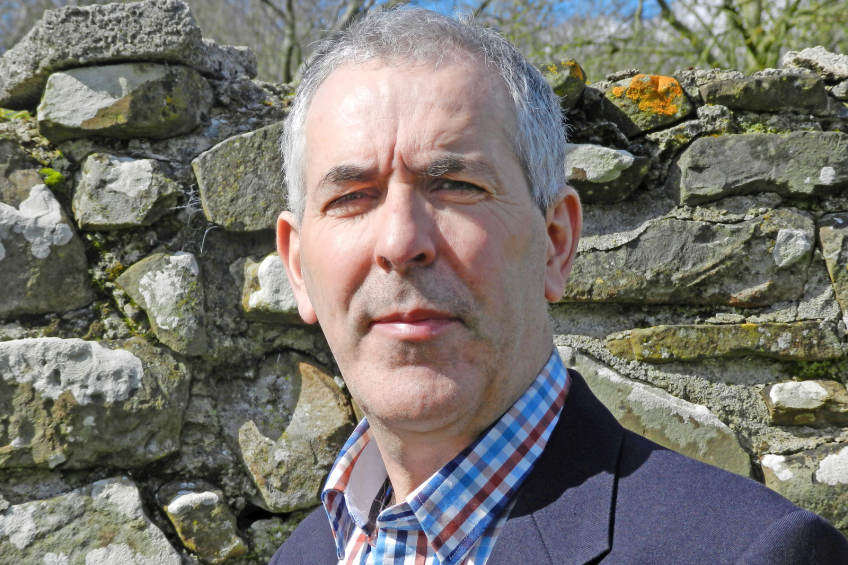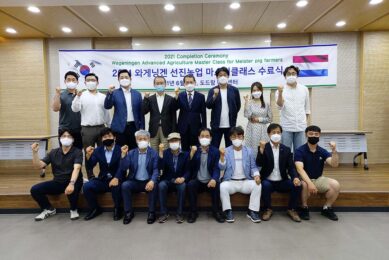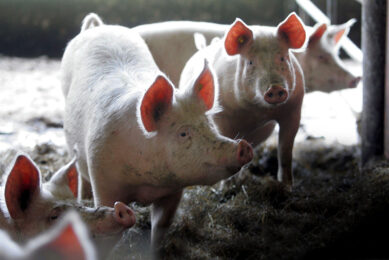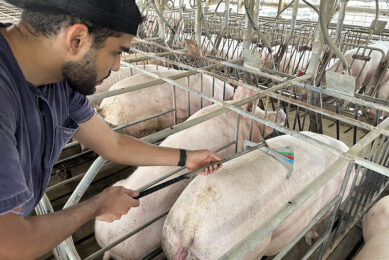Treat pigs well and they will reward all efforts

Photos: Pat Kirwan Associates
For the first time in history, the international veterinary pig congresses IPVS and ESPHM will coincide. The man overseeing this in Dublin, Ireland, is veterinarian Pat Kirwan. The main health themes for this year include, not surprisingly, PED and PRRS virus.
Pat Kirwan is at heart a pig vet. He says, “I like my job very much because no 2 days are the same. Being a pig vet stretches all the competencies, like (preventative) medicine, husbandry, nutrition, management, economics, statistics, genetics, etc.” The exploration of all these disciplines is what delivers the buzz and ensures that the job remains stimulating and rewarding.
Pat Kirwan
Pat Kirwan qualified from University College Dublin, Ireland, as a vet in 1989. In 1998 he embarked on a career in intensive livestock, specialising in pigs and poultry. In 2001 he gained a certificate in pig medicine from the Royal College of Veterinary Surgeons. Since 1998 he has worked in a pig and poultry practice in Ireland, since 2005 as the principal. He is a believer in the ‘seeing practice’ element of veterinary student education. He is involved in Animal Health Ireland, in its technical working group for biosecurity.
This year, the buzz is in no short supply, as he is president of the International Pig Veterinary Society (IPVS) and hence the main force behind the 24th IPVS Congress, to be held in the Royal Dublin Society in Dublin, Ireland. To add to Kirwan’s plate, the congress is held jointly with the 8th edition of the European Symposium of Porcine Health Management (ESPHM).
Having qualified as a Veterinary Surgeon from University College Dublin in 1989, Kirwan practiced in mixed general practice for 7 years and in a state veterinary job for 3. He got into the pig business when he read an advertisement in a national newspaper. “I spotted an advert which was looking for a veterinary surgeon to operate in an intensive livestock practice. I had grown up on a commercial fish farm (rainbow trout) and the area of intensive livestock production always appealed to me. So I applied and was successful.”
Strategies for pigs can be adapted for poultry
When not working for the IPVS/ESPHM, his daily activities consist of working for about 20 pig farmers as a pig health consultant. Collectively, they have about 15,000 sows between them. Most of the farms are single-site, integrated pig units. They receive 3 to 4 farm visits per year plus some abattoir screening.
Kirwan: “With this knowledge we have developed active herd health programmes for the farms with an aim of promoting good herd health with a dependence on antimicrobial use as low as possible and replacing traditional reliance with alternative herd management and vaccination strategies.”
Kirwan also works as a poultry health consultant to a large broiler breeding operation that produces upwards of 1.25 million day-old broiler chicks per week. The parallels between pig and poultry production are an advantage, according to him, since strategies used in one area can be adapted and adopted elsewhere. Pigs represent a very good population model he stresses. “If the basics of population medicine are applied to the pig then the response is both predictable and rewarding. Pigs are sociable creatures. Treat them well in terms of management and husbandry and they will repay all the efforts you put into them.”
Open and informal approach
The main themes of this year’s IPVS congress will include 4 parallel sessions operational on each of the 3 days of the congress. These cover Virology & viral diseases, Reproduction, Veterinary Public Health, Food Safety, Bacterial diseases, Welfare & Nutrition, Herd Health Management, Immunology & Vaccination, Parasitology and Miscellaneous presentations.
Kirwan: “This year the theme is going to be similar to previous conferences, with the aim being to be as practical as possible. We are going to have two Clinical Club sessions on both the Wednesday and Thursday afternoons. These sessions will be chaired by my UK colleague, David Chennells, who has been chairing the clinical clubs in the UK Pig Veterinary Society (PVS) for many years.”
The format is new to the IPVS/ESPHM, requiring the participants to present a few slides about a current clinical issue that they might have found on a farm. There is no need for a diagnosis, conclusions or in-depth analysis of the problem. The audience will participate with comments and recommendations. Kirwan: “It is an informal approach in an intimate location that should primarily be informative with a degree of fun thrown in.”
Another innovation on the last afternoon will be the ‘Big Debate’ before the general assembly. At the time of writing, the topic for the debate was still to be finalised, but according to Kirwan it is sure to be interesting and hopefully controversial.
Content capture is another innovative technology that will be applied at the congress this year. The audio and slides of each session will be recorded, archived and made available to delegates for future reference.
PED and PRRS
Submissions on both PED and PRRS are the big areas of interest for this year. Looking through the provisional programme there is a great mix of topics and speakers. Kirwan: “I am delighted with the standard and the diversity of all the papers presented.”
Two weeks after the early-bird deadline, more than 2,800 delegates registered. There were 1,114 papers submitted from 49 countries with the largest contribution from the US (157), Spain (91), Germany (89), Belgium (59), the Netherlands (55), Korea (49) and the UK (48). Kirwan states that these statistics display the international appeal of the event. He says, “Integration of the two events made sense this year and is something that should be considered for future congresses. By integrating with ESPHM there is growth in attendance this year.”
A detailed breakdown of the provenance of the delegates is not yet available but it appears that there have been benefits from attendance and industry, points of view. The conference has been structured this year along the lines of the seven successful ESPHM conferences to date. Given the increased attendance, there are a few more parallel sessions and keynote presentations and an extra day in comparison to earlier ESPHM conferences.
Pork price: Source of worry
Jointly, the Northern Irish and Irish pig veterinary community on the entire island of Ireland is small with 20 veterinary surgeons looking after about 200,000 sows. Kirwan: “Legally, there is currently only a requirement to visit pig farms in Ireland once per annum, though the frequency is much greater than this in most cases. Those involved in the pig veterinary service here in Ireland would wish for a reversion to the previous requirement of quarterly visits to each farm.”
Idealism and reality, however, are sometimes hard to unite, Kirwan knows. As in everywhere in Europe, pork prices are a consistent source of worry, both for pig farmers and their vets. Kirwan: “Because of pig production’s consistent marginal nature, viable and sustainable pig production are an aspiration rather than a reality.”
Anybody interested in participating in the Clinical Club sessions can contact David Chennells on davidchennells@btinternet.com. More information on the entire event can be found at www.IPVS2016.com
.
Join 18,000+ subscribers
Subscribe to our newsletter to stay updated about all the need-to-know content in the pigsector, three times a week. Beheer
Beheer










 WP Admin
WP Admin  Bewerk bericht
Bewerk bericht